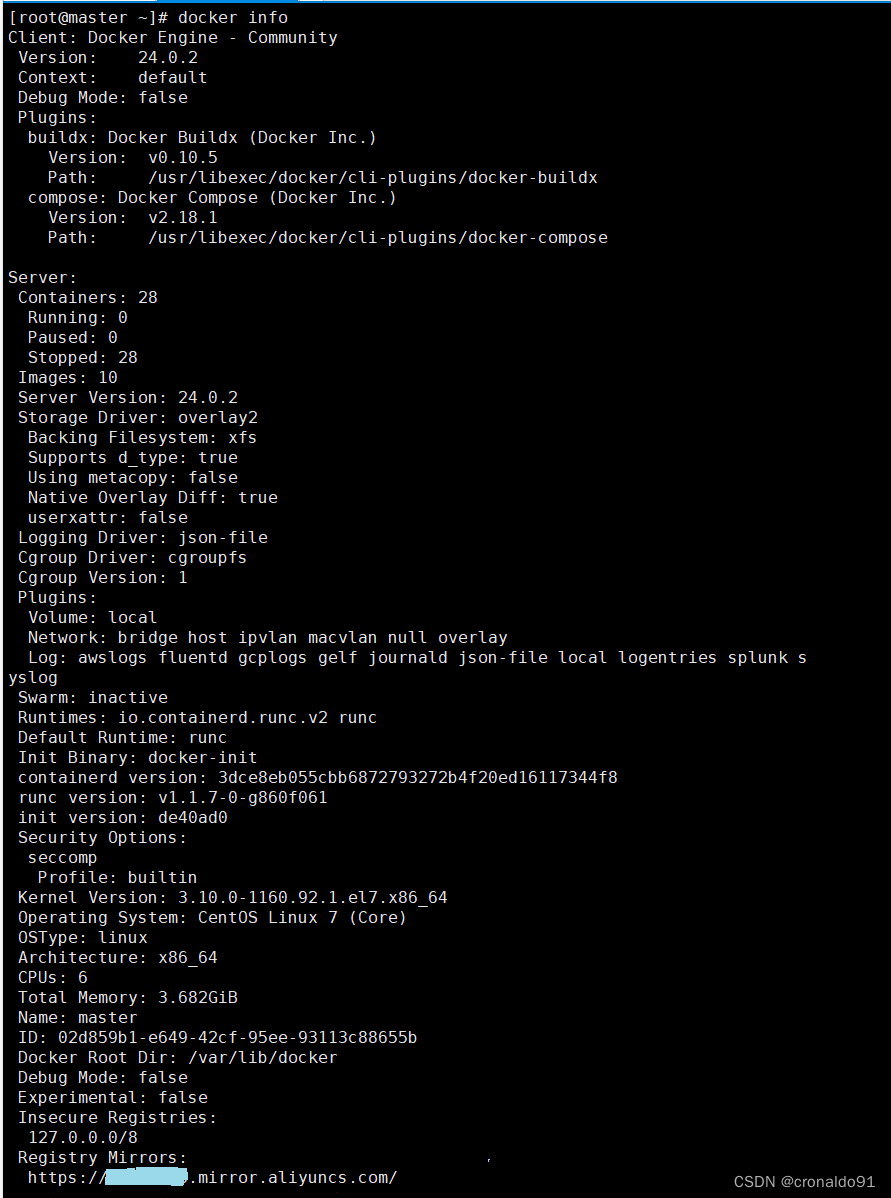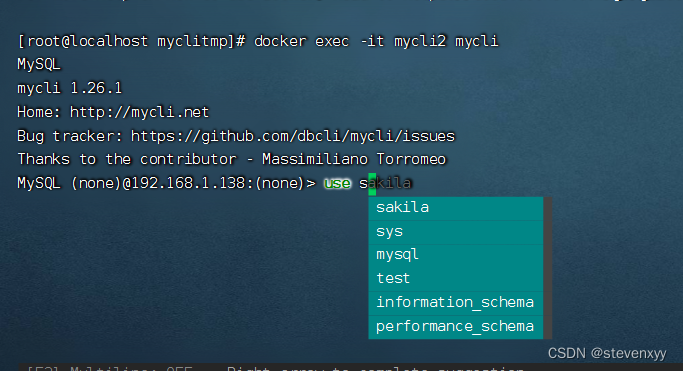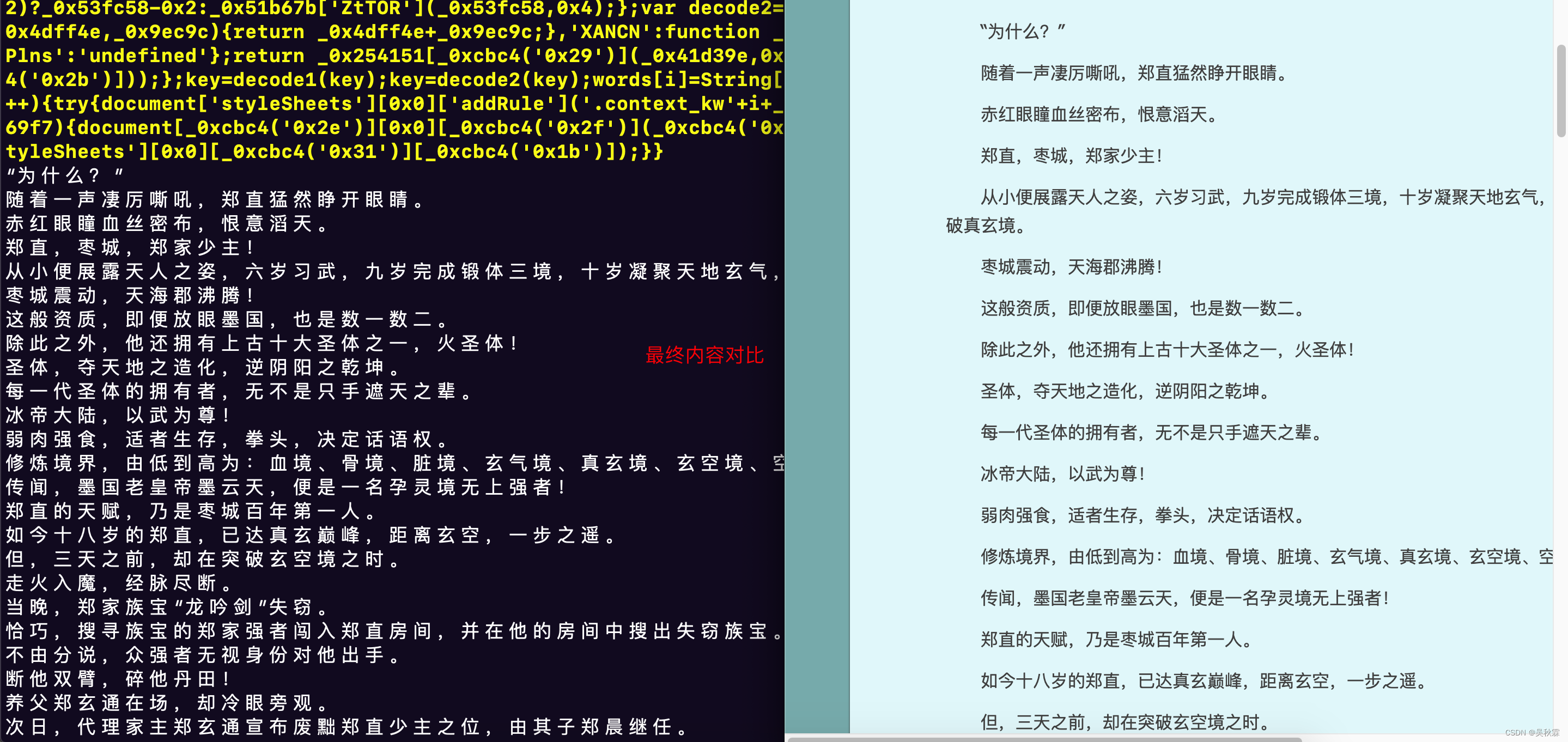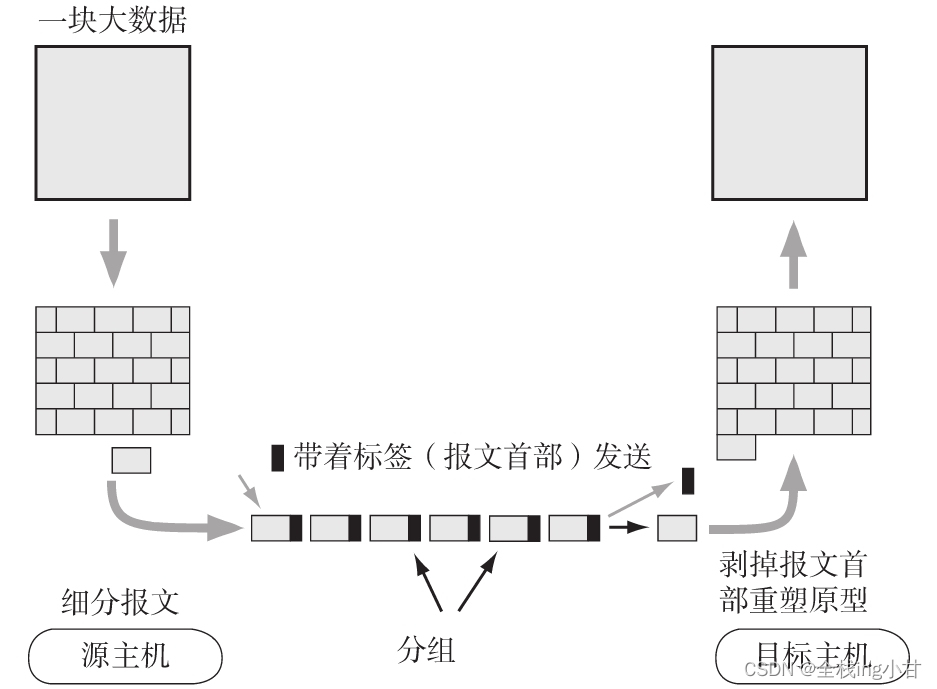文章目录
- 前言
- 1. 概述
- 2. 单向链表
- 3. 单向链表(带哨兵)
- 4. 双向链表(带哨兵)
- 5. 环形链表(带哨兵)
- 6. 结语
前言
链表是我们在日常编程中经常使用的一种数据结构,它相比于数组具有更好的动态性能。但是,对链表的深入理解需要我们掌握其内在的逻辑结构和操作原理。本文将带领读者一起深入理解链表的概念、种类、特性及其在Java中的具体实现方式。
我们将从最简单的单向链表开始,探讨如何通过Java代码实现它的主要操作,如添加、遍历、插入和删除节点等。然后,我们会讨论更复杂的链表类型,如带有哨兵节点的链表,双向链表和环形链表,分析它们的优缺点以及适用的场景。
1. 概述
链表是一种基本的数据结构,用于维护数据元素的线性集合。链表中的元素(通常称为节点)不一定在内存中是连续存储的。相反,每个元素都包含了指向其下一个元素的指针或引用。这种数据结构的特性,使得插入或删除元素的操作相对于数组等连续存储的数据结构来说,更加方便和高效。
链表的类型主要有以下几种:
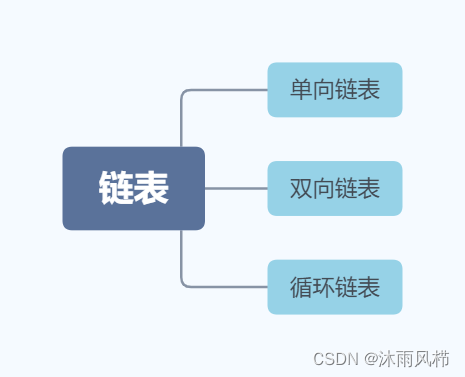
- 单向链表,每个元素只知道其下一个元素是谁

- 双向链表,每个元素知道其上一个元素和下一个元素

- 循环链表,通常的链表尾节点 tail 指向的都是 null,而循环链表的 tail 指向的是头节点 head

链表内还有一种特殊的节点称为哨兵(Sentinel)节点,也叫做哑元( Dummy)节点,它不存储数据,通常用作头尾,用来简化边界判断,如下图所示

随机访问性能
链表的随机访问性能并不强大。如果需要根据索引查找特定的元素,必须从头节点开始,逐一遍历节点直到找到目标节点。因此,此操作的时间复杂度为 O ( n ) O(n) O(n),其中 n n n 为链表的长度。
插入或删除性能
链表在插入或删除节点时的性能主要取决于操作的位置:
-
在头节点进行插入或删除:由于头节点可以被立即访问,因此在链表的起始位置进行插入或删除操作的时间复杂度为 O ( 1 ) O(1) O(1)。
-
在尾节点进行插入或删除:如果已知尾节点(即尾节点的引用已经被保存),则在链表的结束位置进行插入或删除操作的时间复杂度为 O ( 1 ) O(1) O(1)。然而,如果尾节点未知,我们需要从头节点开始遍历链表以找到尾节点,这使得时间复杂度升至 O ( n ) O(n) O(n)。
-
在中间位置进行插入或删除:这涉及两个步骤,首先需要找到目标位置(这部分的时间复杂度为 O ( n ) O(n) O(n)),然后进行实际的插入或删除操作(这部分的时间复杂度为 O ( 1 ) O(1) O(1))。因此,总的时间复杂度为 O ( n ) + O ( 1 ) = O ( n ) O(n) + O(1) = O(n) O(n)+O(1)=O(n)。
2. 单向链表
根据单向链表的定义,首先定义一个存储 value 和 next 指针的类 Node,和一个描述头部节点的引用
public class SinglyLinkedList {
private Node head; // 头部节点
private static class Node { // 节点类
int value;
Node next;
public Node(int value, Node next) {
this.value = value;
this.next = next;
}
}
}
- Node 定义为内部类,是为了对外隐藏实现细节,没必要让类的使用者关心 Node 结构
- 定义为 static 内部类,是因为 Node 不需要与 SinglyLinkedList 实例相关,多个 SinglyLinkedList实例能共用 Node 类定义
头部添加
public class SinglyLinkedList {
// ...
public void addFirst(int value) {
this.head = new Node(value, this.head);
}
}
- 如果 this.head == null,新增节点指向 null,并作为新的 this.head
- 如果 this.head != null,新增节点指向原来的 this.head,并作为新的 this.head
- 注意赋值操作执行顺序是从右到左
while 遍历
public class SinglyLinkedList {
// ...
public void loop() {
Node curr = this.head;
while (curr != null) {
// 做一些事
curr = curr.next;
}
}
}
for 遍历
public class SinglyLinkedList {
// ...
public void loop() {
for (Node curr = this.head; curr != null; curr = curr.next) {
// 做一些事
}
}
}
- 以上两种遍历都可以把要做的事以 Consumer 函数的方式传递进来
- Consumer 的规则是一个参数,无返回值,因此像 System.out::println 方法等都是 Consumer
- 调用 Consumer 时,将当前节点 curr.value 作为参数传递给它
迭代器遍历
public class SinglyLinkedList implements Iterable<Integer> {
// ...
private class NodeIterator implements Iterator<Integer> {
Node curr = head;
public boolean hasNext() {
return curr != null;
}
public Integer next() {
int value = curr.value;
curr = curr.next;
return value;
}
}
public Iterator<Integer> iterator() {
return new NodeIterator();
}
}
- hasNext 用来判断是否还有必要调用 next
- next 做两件事
- 返回当前节点的 value
- 指向下一个节点
- NodeIterator 要定义为非 static 内部类,是因为它与 SinglyLinkedList 实例相关,是对某个 SinglyLinkedList 实例的迭代
递归遍历
public class SinglyLinkedList implements Iterable<Integer> {
// ...
public void loop() {
recursion(this.head);
}
private void recursion(Node curr) {
if (curr == null) {
return;
}
// 前面做些事
recursion(curr.next);
// 后面做些事
}
}
尾部添加
public class SinglyLinkedList {
// ...
private Node findLast() {
if (this.head == null) {
return null;
}
Node curr;
for (curr = this.head; curr.next != null; ) {
curr = curr.next;
}
return curr;
}
public void addLast(int value) {
Node last = findLast();
if (last == null) {
addFirst(value);
return;
}
last.next = new Node(value, null);
}
}
- 注意,找最后一个节点,终止条件是 curr.next == null
- 分成两个方法是为了代码清晰,而且 findLast() 之后还能复用
尾部添加多个
public class SinglyLinkedList {
// ...
public void addLast(int first, int... rest) {
Node sublist = new Node(first, null);
Node curr = sublist;
for (int value : rest) {
curr.next = new Node(value, null);
curr = curr.next;
}
Node last = findLast();
if (last == null) {
this.head = sublist;
return;
}
last.next = sublist;
}
}
- 先串成一串 sublist
- 再作为一个整体添加
根据索引获取
public class SinglyLinkedList {
// ...
private Node findNode(int index) {
int i = 0;
for (Node curr = this.head; curr != null; curr = curr.next, i++) {
if (index == i) {
return curr;
}
}
return null;
}
private IllegalArgumentException illegalIndex(int index) {
return new IllegalArgumentException(String.format("index [%d] 不合法%n", index));
}
public int get(int index) {
Node node = findNode(index);
if (node != null) {
return node.value;
}
throw illegalIndex(index);
}
}
- 同样,分方法可以实现复用
插入
public class SinglyLinkedList {
// ...
public void insert(int index, int value) {
if (index == 0) {
addFirst(value);
return;
}
Node prev = findNode(index - 1); // 找到上一个节点
if (prev == null) { // 找不到
throw illegalIndex(index);
}
prev.next = new Node(value, prev.next);
}
}
- 插入包括下面的删除,都必须找到上一个节点
删除
public class SinglyLinkedList {
// ...
public void remove(int index) {
if (index == 0) {
if (this.head != null) {
this.head = this.head.next;
return;
} else {
throw illegalIndex(index);
}
}
Node prev = findNode(index - 1);
Node curr;
if (prev != null && (curr = prev.next) != null) {
prev.next = curr.next;
} else {
throw illegalIndex(index);
}
}
}
- 第一个 if 块对应着 removeFirst 情况
- 最后一个 if 块对应着至少得两个节点的情况
- 不仅仅判断上一个节点非空,还要保证当前节点非空
3. 单向链表(带哨兵)
观察之前单向链表的实现,发现每个方法内几乎都有判断是不是 head 这样的代码,能不能简化呢?
用一个不参与数据存储的特殊 Node 作为哨兵,它一般被称为哨兵或哑元,拥有哨兵节点的链表称为带头链表
public class SinglyLinkedListSentinel {
// ...
private Node head = new Node(Integer.MIN_VALUE, null);
}
- 具体存什么值无所谓,因为不会用到它的值
加入哨兵节点后,代码会变得比较简单,先看几个工具方法
public class SinglyLinkedListSentinel {
// ...
// 根据索引获取节点
private Node findNode(int index) {
int i = -1;
for (Node curr = this.head; curr != null; curr = curr.next, i++) {
if (i == index) {
return curr;
}
}
return null;
}
// 获取最后一个节点
private Node findLast() {
Node curr;
for (curr = this.head; curr.next != null; ) {
curr = curr.next;
}
return curr;
}
}
- findNode 与之前类似,只是 i 初始值设置为 -1 对应哨兵,实际传入的 index 也是 [ − 1 , ∞ ) [-1, \infty) [−1,∞)
- findLast 绝不会返回 null 了,就算没有其它节点,也会返回哨兵作为最后一个节点
这样,代码简化为
public class SinglyLinkedListSentinel {
// ...
public void addLast(int value) {
Node last = findLast();
/*
改动前
if (last == null) {
this.head = new Node(value, null);
return;
}
*/
last.next = new Node(value, null);
}
public void insert(int index, int value) {
/*
改动前
if (index == 0) {
this.head = new Node(value, this.head);
return;
}
*/
// index 传入 0 时,返回的是哨兵
Node prev = findNode(index - 1);
if (prev != null) {
prev.next = new Node(value, prev.next);
} else {
throw illegalIndex(index);
}
}
public void remove(int index) {
/*
改动前
if (index == 0) {
if (this.head != null) {
this.head = this.head.next;
return;
} else {
throw illegalIndex(index);
}
}
*/
// index 传入 0 时,返回的是哨兵
Node prev = findNode(index - 1);
Node curr;
if (prev != null && (curr = prev.next) != null) {
prev.next = curr.next;
} else {
throw illegalIndex(index);
}
}
public void addFirst(int value) {
/*
改动前
this.head = new Node(value, this.head);
*/
this.head.next = new Node(value, this.head.next);
// 也可以视为 insert 的特例, 即 insert(0, value);
}
}
- 对于删除,前面说了【最后一个 if 块对应着至少得两个节点的情况】,现在有了哨兵,就凑足了两个节点
4. 双向链表(带哨兵)
public class DoublyLinkedListSentinel implements Iterable<Integer> {
private final Node head;
private final Node tail;
public DoublyLinkedListSentinel() {
head = new Node(null, 666, null);
tail = new Node(null, 888, null);
head.next = tail;
tail.prev = head;
}
private Node findNode(int index) {
int i = -1;
for (Node p = head; p != tail; p = p.next, i++) {
if (i == index) {
return p;
}
}
return null;
}
public void addFirst(int value) {
insert(0, value);
}
public void removeFirst() {
remove(0);
}
public void addLast(int value) {
Node prev = tail.prev;
Node added = new Node(prev, value, tail);
prev.next = added;
tail.prev = added;
}
public void removeLast() {
Node removed = tail.prev;
if (removed == head) {
throw illegalIndex(0);
}
Node prev = removed.prev;
prev.next = tail;
tail.prev = prev;
}
public void insert(int index, int value) {
Node prev = findNode(index - 1);
if (prev == null) {
throw illegalIndex(index);
}
Node next = prev.next;
Node inserted = new Node(prev, value, next);
prev.next = inserted;
next.prev = inserted;
}
public void remove(int index) {
Node prev = findNode(index - 1);
if (prev == null) {
throw illegalIndex(index);
}
Node removed = prev.next;
if (removed == tail) {
throw illegalIndex(index);
}
Node next = removed.next;
prev.next = next;
next.prev = prev;
}
private IllegalArgumentException illegalIndex(int index) {
return new IllegalArgumentException(
String.format("index [%d] 不合法%n", index));
}
@Override
public Iterator<Integer> iterator() {
return new Iterator<Integer>() {
Node p = head.next;
@Override
public boolean hasNext() {
return p != tail;
}
@Override
public Integer next() {
int value = p.value;
p = p.next;
return value;
}
};
}
static class Node {
Node prev;
int value;
Node next;
public Node(Node prev, int value, Node next) {
this.prev = prev;
this.value = value;
this.next = next;
}
}
}
5. 环形链表(带哨兵)
双向环形链表带哨兵,这时哨兵既作为头,也作为尾




参考实现
public class DoublyLinkedListSentinel implements Iterable<Integer> {
@Override
public Iterator<Integer> iterator() {
return new Iterator<>() {
Node p = sentinel.next;
@Override
public boolean hasNext() {
return p != sentinel;
}
@Override
public Integer next() {
int value = p.value;
p = p.next;
return value;
}
};
}
static class Node {
Node prev;
int value;
Node next;
public Node(Node prev, int value, Node next) {
this.prev = prev;
this.value = value;
this.next = next;
}
}
private final Node sentinel = new Node(null, -1, null); // 哨兵
public DoublyLinkedListSentinel() {
sentinel.next = sentinel;
sentinel.prev = sentinel;
}
/**
* 添加到第一个
* @param value 待添加值
*/
public void addFirst(int value) {
Node next = sentinel.next;
Node prev = sentinel;
Node added = new Node(prev, value, next);
prev.next = added;
next.prev = added;
}
/**
* 添加到最后一个
* @param value 待添加值
*/
public void addLast(int value) {
Node prev = sentinel.prev;
Node next = sentinel;
Node added = new Node(prev, value, next);
prev.next = added;
next.prev = added;
}
/**
* 删除第一个
*/
public void removeFirst() {
Node removed = sentinel.next;
if (removed == sentinel) {
throw new IllegalArgumentException("非法");
}
Node a = sentinel;
Node b = removed.next;
a.next = b;
b.prev = a;
}
/**
* 删除最后一个
*/
public void removeLast() {
Node removed = sentinel.prev;
if (removed == sentinel) {
throw new IllegalArgumentException("非法");
}
Node a = removed.prev;
Node b = sentinel;
a.next = b;
b.prev = a;
}
/**
* 根据值删除节点
* <p>假定 value 在链表中作为 key, 有唯一性</p>
* @param value 待删除值
*/
public void removeByValue(int value) {
Node removed = findNodeByValue(value);
if (removed != null) {
Node prev = removed.prev;
Node next = removed.next;
prev.next = next;
next.prev = prev;
}
}
private Node findNodeByValue(int value) {
Node p = sentinel.next;
while (p != sentinel) {
if (p.value == value) {
return p;
}
p = p.next;
}
return null;
}
}
6. 结语
通过对链表的深入学习和理解,我们可以看到,链表并不只是一个简单的数据结构,它在解决许多编程问题上具有独特的优势。学会有效地使用和优化链表,可以帮助我们写出更高效、更易维护的代码。
希望本文能够帮助读者更好地理解链表这一数据结构,并能在实际编程中灵活运用。链表只是数据结构中的一小部分,接下来我们将继续深入探讨其他更复杂的数据结构,如树、图等。让我们共同期待!


